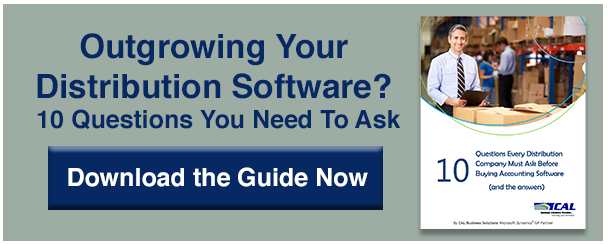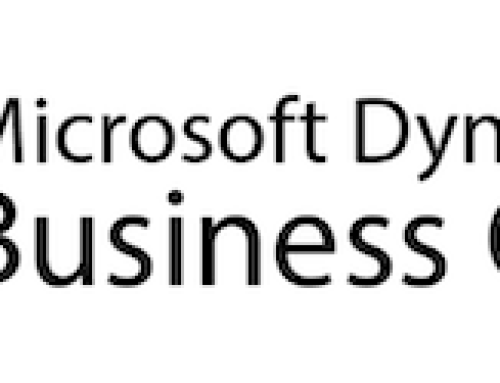Every company uses financial accounting software, but when you are a distribution company there is more to it than just debits and credits. There are specific features you distribution company needs in the software in order for your business to thrive. Here are six things distribution companies need to be able to do within their financial accounting software:
#1 Access the Right Reports
Every financial accounting software package talks about reporting. But make sure that the package you choose from your distribution company has reports pre-built for your industry and the ability to easily create your own reports.
For example, here are 3 of our favorite standard reports in Microsoft Dynamics GP for our distribution clients:
Stock status report: This report is pretty much your “Bible” when you are talking about on-hand quantities or the dollar values of your inventory. Your stock status report can be broken down by different warehouses and locations. Those locations can be physical locations, maybe you’re holding inventory on the East Coast and West Coast, or digital locations, such as when you set up a quarantine area here and the rest of my inventory there. If your inventory items are set up well, you can break it down by item classes as well. This report will give you a definitive answer as to how many units the system thinks you have and how much dollar value has been put behind it.
Historical Inventory Trial Balance (HITB) report: This is valuable because you can actually set date ranges which will show you what your inventory value was as of a specific timeframe. This is helpful for reconciling if you need to be double check your values historically.
SmartList Reports: You can create your own SmartLists in Dynamics GP anytime you need straightforward information. For example if you want a quick list of inventory items, based on what site they are in, what group you want to use and how many you have. Within SmartLists you also have other quantity types available to you. So your on-hand quantity is how many you have under the roof. You can also see your allocated or your available numbers and how many are reserved for sales documents or other transactions. You can compare this with the quantity you actually have available to sell or give back to your vendor.
#2 See Quantity On Hand/Quantity Available
How can you be expected to run a distribution business, either from the buying side or the selling side, if you don’t know how much inventory you have and how much of it is still useable. A financial accounting software system that is built with distribution in mind includes inventory management features like these. Within Microsoft Dynamics GP you can see inventory that is tied up on sales documents or other documents, and when it is going to be available. Perhaps it is just quarantined somewhere or it is promised to a customer, or it is ready to ship. You have all of this information available to you from the inventory module within Microsoft Dynamics GP.
#3 Plan Demand Quantity
When you track your inventory right inside your financial accounting software you can see the historical demand on items. This can help you with purchase demand planning.
#4 Assign Landed Costs
If you choose to, you can receive your inventory from your vendor and assign landed costs. You can decide how much of that cost should revalue your inventory. The purpose of revaluing your inventory with landed costs is to make sure you have a more accurate sales margin, because your cost of an item is not just the cost of the product, you also had to pay fees such as shipping or handling.
Some distributors will set a cap on it and revalue their inventory only up to a certain percentage and everything else is a write off. This helps keep any spikes out of your inventory. For example if you need to purchase something and pay premium shipping to get it quickly, that shipping cost is going to be your landed cost and this one time, because you had to rush it, it was very high. But on the other hand maybe you don’t want all of that cost going to revalue your inventory. You can set up your choices in the software system.
#5 Quick Stock Count Entry
Within Microsoft Dynamics GP, out-of-the-box, you can manage your inventory more quickly with stock count and stock count entries. There are a couple different ways that you can get your quantities into and out of your financial accounting system. Ideally, the inventory comes in by receiving a purchase order and inventory goes out when you sell it to a customer. Well, that is not always realistic. So within Dynamics GP there is a stock count entry where you can add any sort of grouping of items. You can bulk add items into your transaction, print this out and hand to your warehouse. They can count your inventory and very quickly enter those quantities back into your system. The alternative to doing that be a manual standard inventory adjustment. Someone would have to sit there and line by line enter each item number, calculate and enter the difference between on-hand and warehouse count. Manual math and data entry is never reliable. With the stock count entry feature, you literally key in what the warehouse gave back to you and Dynamics GP will do the math for you. It creates the transaction and you just post it through. This really speeds up that process, especially at the end of the year when your accountant is telling you that you need to do a physical inventory.
#6 Process Returns
Sometimes things go wrong, so distributors do have different product return situations. By tracking your inventory in Microsoft Dynamics GP you can see quantities available for returns. This could be product that needs to go back to the vendor or product that came back to you from your customer. In addition to tracking, you have the additional option of doing inventory adjustments or variance transactions to adjust your inventory quantities.
Microsoft Dynamics GP gives you all of these features, and more.
Find out more ways that Microsoft Dynamics GP for Distribution can help your business in the white paper, “10 Questions Every Distribution Company Needs to Ask Before Buying Accounting Software.”
If you are a small or mid-sized distribution company looking for similar benefits, contact CAL Business Solutions. 860-485-0910 x4 or sales@calszone.com. We can help you evaluate your current systems, business processes, and goals to determine if Microsoft Dynamics GP is the right fit for you.
By CAL Business Solutions, Microsoft Dynamics GP Partner serving the Distribution industry, https://www.calszone.com/distribution
Twitter: @CALERPNews

















